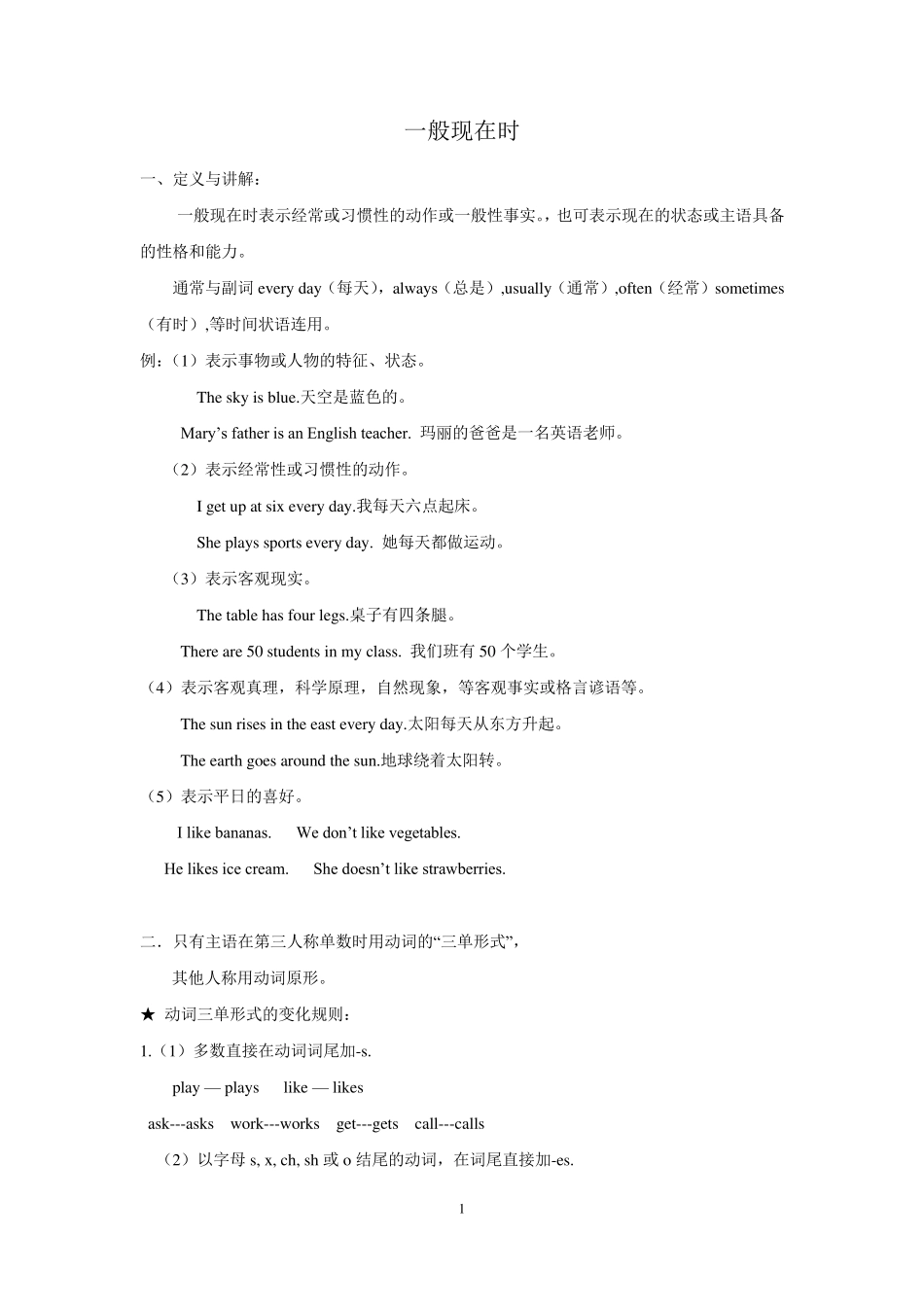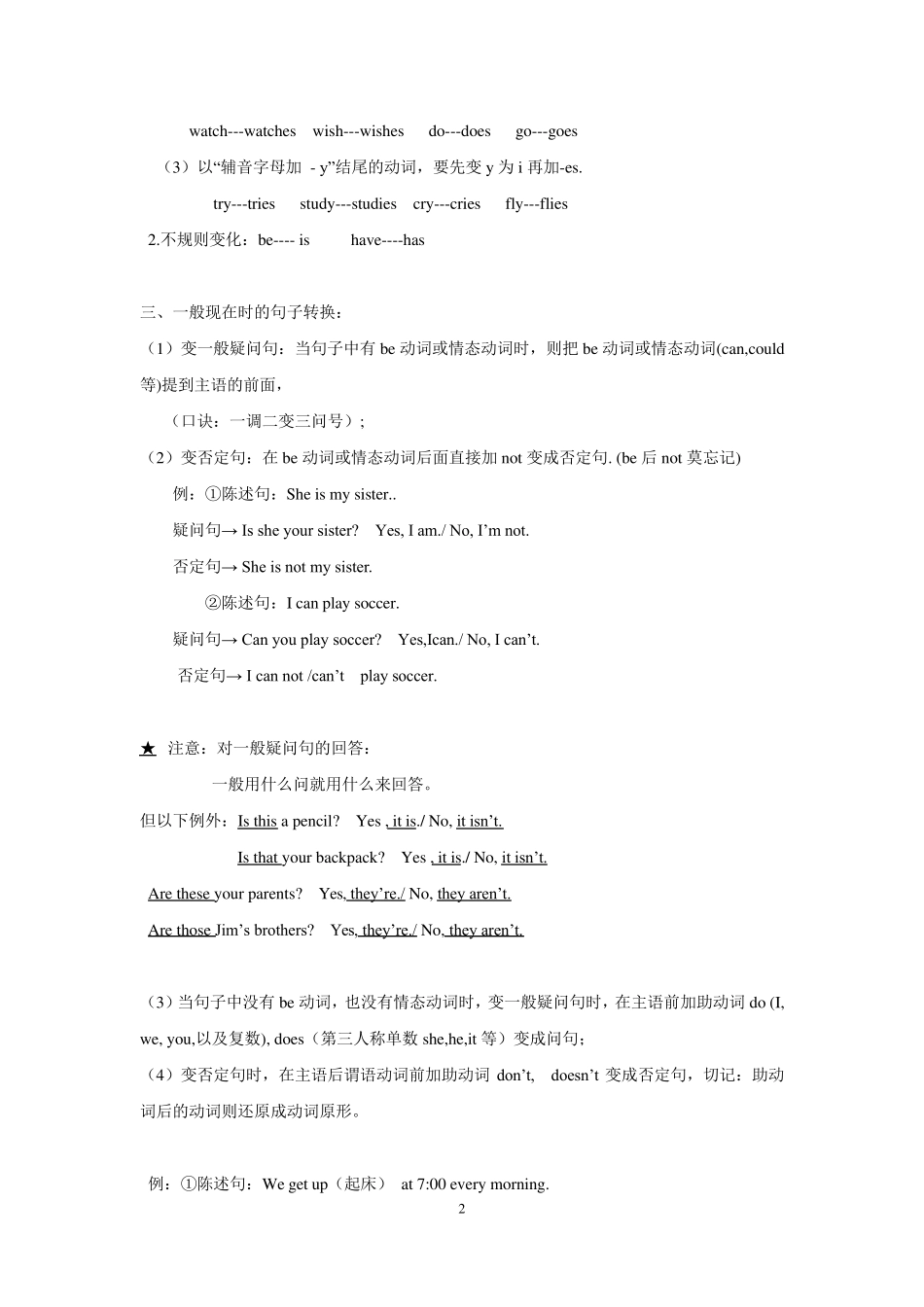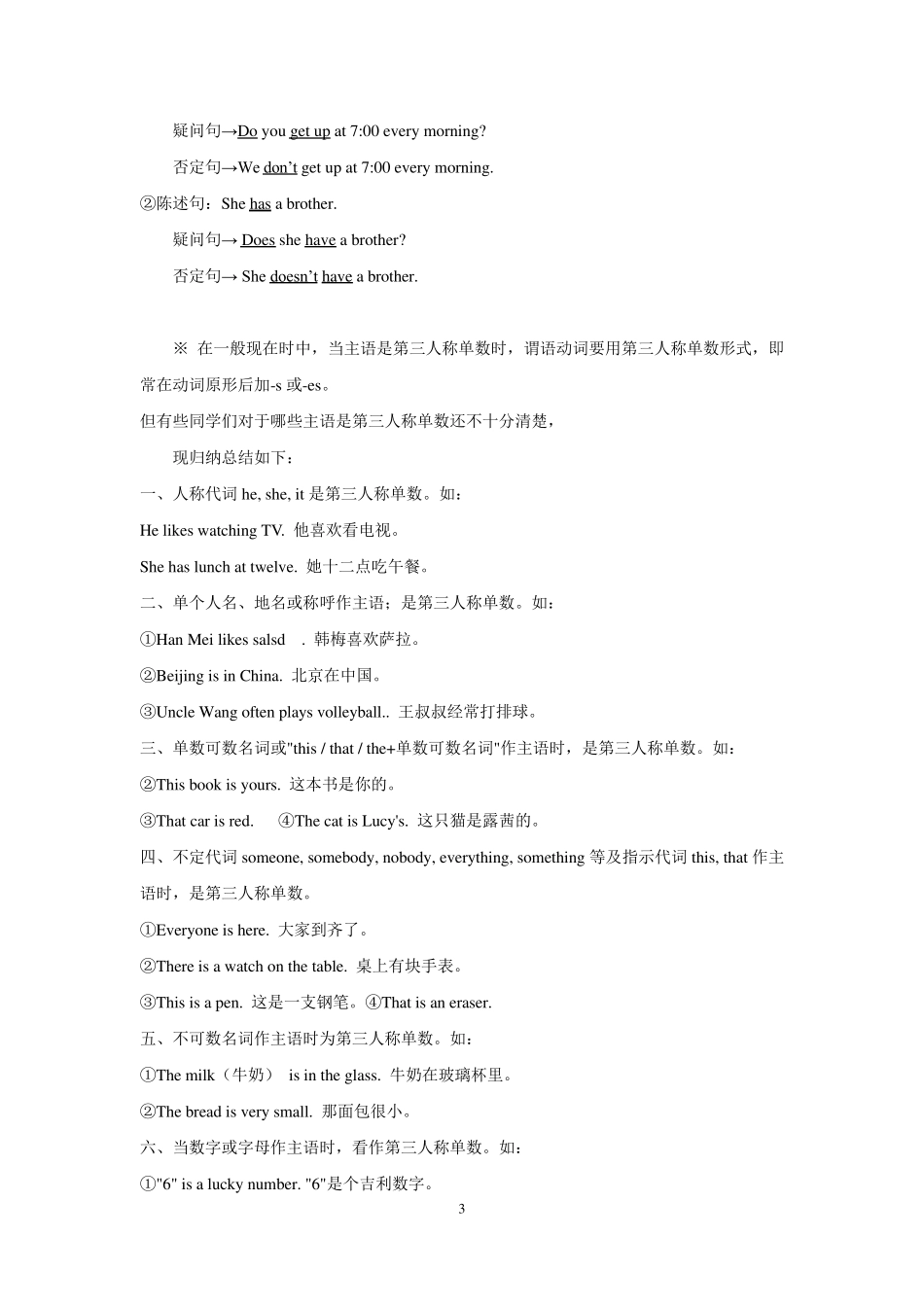1 一般现在时 一、定义与讲解: 一般现在时表示经常或习惯性的动作或一般性事实。,也可表示现在的状态或主语具备的性格和能力。 通常与副词every day(每天),always(总是),usually(通常),often(经常)sometimes(有时),等时间状语连用。 例:(1)表示事物或人物的特征、状态。 The sky is blue.天空是蓝色的。 Mary’s father is an English teacher. 玛丽的爸爸是一名英语老师。 (2)表示经常性或习惯性的动作。 I get up at six every day.我每天六点起床。 She plays sports every day. 她每天都做运动。 (3)表示客观现实。 The table has four legs.桌子有四条腿。 There are 50 students in my class. 我们班有50 个学生。 (4)表示客观真理,科学原理,自然现象,等客观事实或格言谚语等。 The sun rises in the east every day.太阳每天从东方升起。 The earth goes around the sun.地球绕着太阳转。 (5)表示平日的喜好。 I like bananas. We don’t like vegetables. He likes ice cream. She doesn’t like strawberries. 二.只有主语在第三人称单数时用动词的“三单形式” , 其他人称用动词原形。 ★ 动词三单形式的变化规则: 1.(1)多数直接在动词词尾加-s. play — plays like — likes ask---asks work---works get---gets call---calls (2)以字母 s, x, ch, sh 或o 结尾的动词,在词尾直接加-es. 2 watch---watches wish---wishes do---does go---goes (3)以“辅音字母加 - y”结尾的动词,要先变y为i 再加-es. try---tries study---studies cry---cries fly---flies 2.不规则变化:be---- is have----has 三、一般现在时的句子转换: (1)变一般疑问句:当句子中有be 动词或情态动词时,则把be 动词或情态动词(can,could等)提到主语的前面, (口诀:一调二变三问号); (2)变否定句:在be 动词或情态动词后面直接加not 变成否定句. (be 后not 莫忘记) 例:①陈述句:She is my sister.. 疑问句→ Is she your sister? Yes, I am./ No, I’m not. 否定句→ She is not my sister. ②陈述句:I can play soccer. 疑问句→ Can you play soccer? Yes,Ican./ No, I can’t. 否定句→ I can not /can’t play soccer. ★ 注意...


